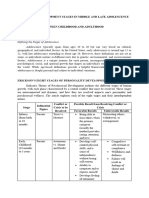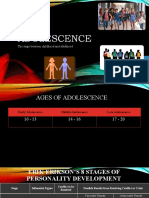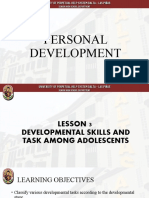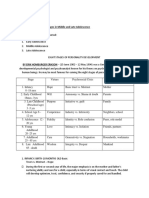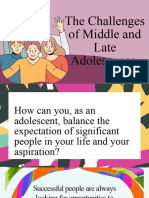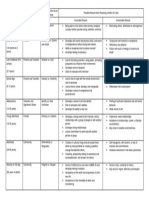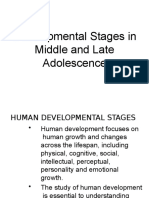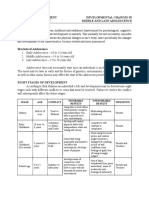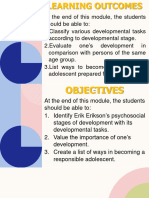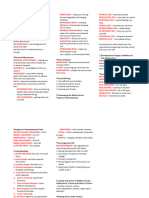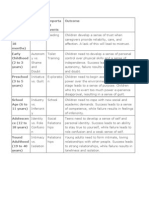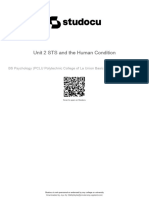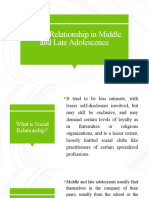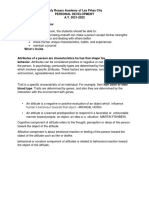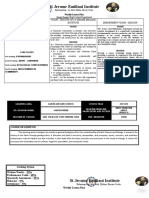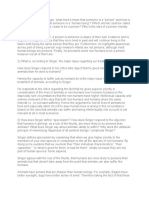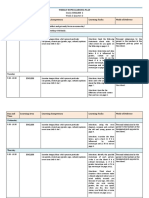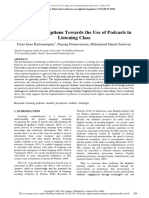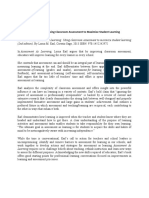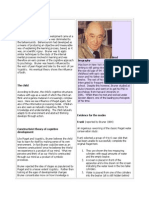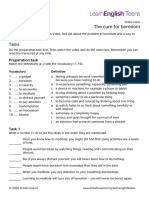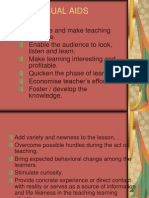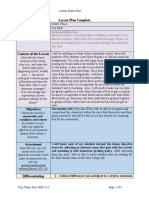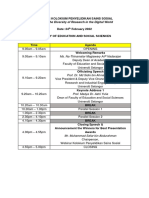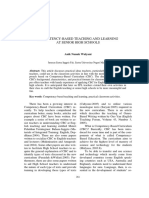0% found this document useful (0 votes)
107 views21 pagesMiddle & Late Adolescence Development
Here are the key responsibilities and expectations of adolescents based on their various roles:
1. As citizens, adolescents have responsibilities to obey laws, respect others, and contribute positively to society.
2. As students, their main responsibilities are to study diligently, learn important life skills, and work hard to achieve their academic goals.
3. In their families, adolescents should respect and assist family members, contribute to household responsibilities appropriately, and uphold family values.
4. In their peer groups, adolescents have responsibilities to be reliable friends, resolve conflicts respectfully, and support others.
Uploaded by
Juju ZenemijCopyright
© © All Rights Reserved
We take content rights seriously. If you suspect this is your content, claim it here.
Available Formats
Download as PPTX, PDF, TXT or read online on Scribd
0% found this document useful (0 votes)
107 views21 pagesMiddle & Late Adolescence Development
Here are the key responsibilities and expectations of adolescents based on their various roles:
1. As citizens, adolescents have responsibilities to obey laws, respect others, and contribute positively to society.
2. As students, their main responsibilities are to study diligently, learn important life skills, and work hard to achieve their academic goals.
3. In their families, adolescents should respect and assist family members, contribute to household responsibilities appropriately, and uphold family values.
4. In their peer groups, adolescents have responsibilities to be reliable friends, resolve conflicts respectfully, and support others.
Uploaded by
Juju ZenemijCopyright
© © All Rights Reserved
We take content rights seriously. If you suspect this is your content, claim it here.
Available Formats
Download as PPTX, PDF, TXT or read online on Scribd
/ 21


